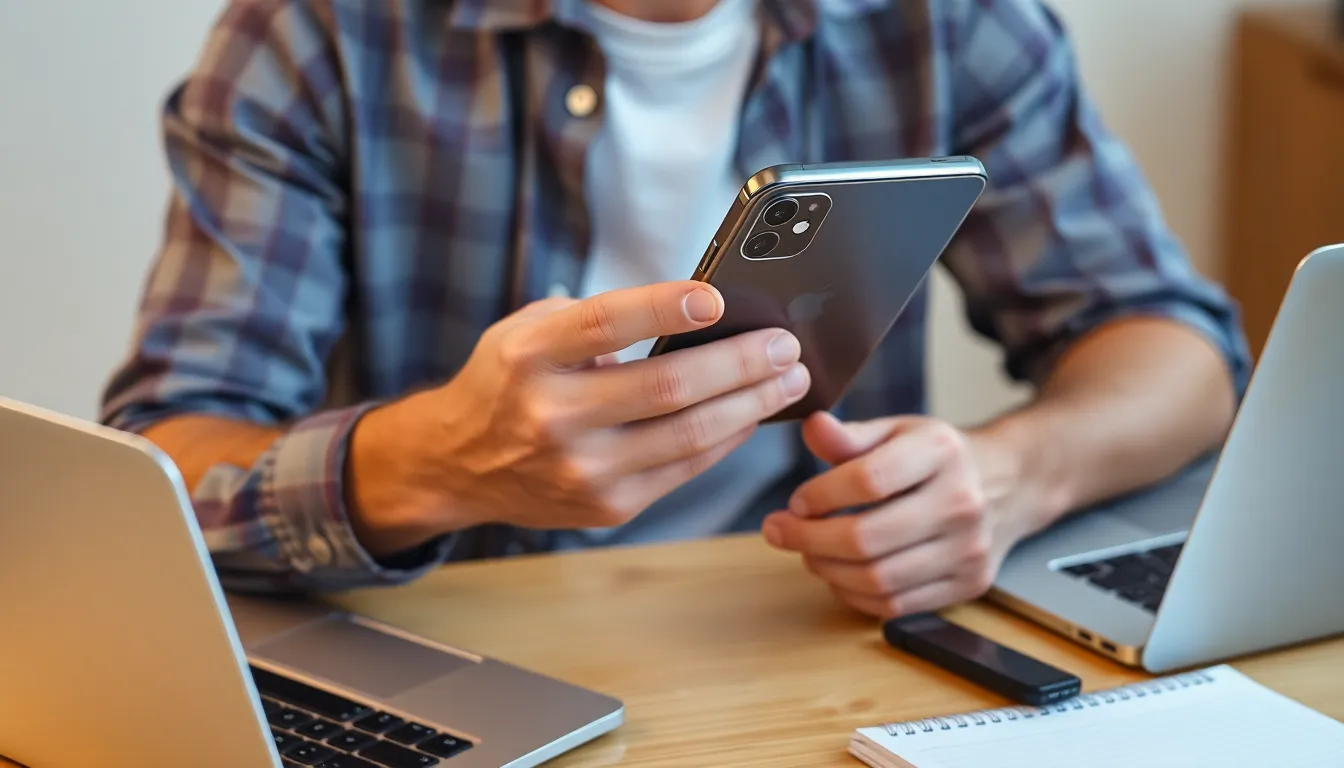In a world where smartphones are practically an extension of ourselves, it’s a nightmare when your iPhone starts acting like it’s possessed. Slow performance, random pop-ups, and apps crashing? It might be time to consider that pesky little virus lurking in your device. But fear not! Cleaning your iPhone of viruses doesn’t require a degree in computer science or a magic wand—just a few simple steps.
Table of Contents
ToggleUnderstanding iPhone Viruses
iPhones can experience various issues that hint at virus activity. Identifying these signs early helps in taking corrective action promptly.
Common Signs of Infection
Users often notice a sluggish response from their devices. Frequent app crashes also indicate potential malware presence. Pop-up ads may appear unexpectedly, disrupting the user experience. Battery drains faster than usual, signaling background processes might be running. Unexplained data usage spikes can occur as well, which points to unauthorized apps.
Types of Malware Affecting iPhones
Several types of malware can affect iPhones. Spyware quietly monitors user activity and can steal personal information. Adware bombards users with unwanted advertisements, leading to frustration. Ransomware locks files until a ransom is paid, causing significant distress. Phishing apps disguise themselves as legitimate applications to harvest sensitive data. Understanding these malware types helps users stay vigilant against threats.
How to Clean iPhone of Viruses

Cleaning an iPhone of viruses involves several key steps to ensure device security and performance. Users can follow these methods to eliminate malware and enhance their iPhone experience.
Backup Your Data
Backing up data is crucial before taking any cleaning steps. iCloud offers a straightforward way to secure valuable files, while iTunes provides another effective backup method. Users should verify that all important information is saved in case a reset becomes necessary. Regular backups ensure that contacts, photos, and essential documents are preserved during this process. Ensuring data safety allows users to proceed with confidence.
Use Built-in iPhone Features
Utilizing built-in iPhone features contributes to virus protection. Activation of the “Find My iPhone” feature helps track devices and remotely erase data if necessary. Enabling automatic updates ensures that the device runs the latest iOS version, which includes essential security patches. Users can also review privacy settings, limiting app access to sensitive data and preventing unauthorized usage. Checking these features helps maintain a secure environment.
Third-Party Antivirus Solutions
Considering third-party antivirus solutions can add an additional layer of security. Various reputable apps are available specifically designed for iOS devices. Users should research options, focusing on well-reviewed applications that provide malware scanning and real-time protection. Reading user reviews and expert recommendations assists in selecting an effective antivirus app. Installing trusted antivirus software helps fortify the device against potential threats.
Preventive Measures
Users can adopt preventive measures to protect their iPhones from viruses. Implementing safe browsing practices and regular software updates plays a crucial role in enhancing security.
Safe Browsing Practices
Avoiding suspicious websites significantly reduces the risk of malware infections. Using secure connections, such as HTTPS, ensures that data transfers are encrypted. Refraining from clicking on unknown links or pop-up ads helps maintain device integrity. Checking app reviews before installation prevents potentially harmful applications from infiltrating devices. Keeping privacy settings enabled for apps provides additional layers of protection.
Regular Software Updates
Installing the latest iOS updates is essential for fixing vulnerabilities. Apple frequently releases patches that address security flaws, so timely updates bolster device defenses. Enabling automatic updates ensures that the device receives patches without user intervention. Regularly checking for updates manually also helps avoid missing critical enhancements. Staying informed about security bulletins from Apple empowers users to act swiftly against threats.
Keeping an iPhone free from viruses is essential for optimal performance and security. By recognizing early signs of infection and following the outlined cleaning steps users can safeguard their devices effectively. Regular backups and utilizing built-in features enhance protection while third-party antivirus solutions can provide an extra layer of security.
Preventive measures play a crucial role in maintaining an iPhone’s health. Safe browsing habits and staying updated on software changes are key to avoiding potential threats. With the right approach users can enjoy a smooth and secure iPhone experience, ensuring their personal data remains protected from malware and other vulnerabilities.



